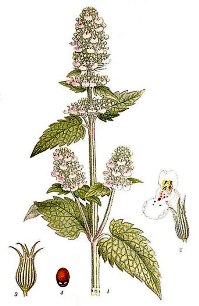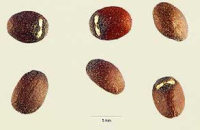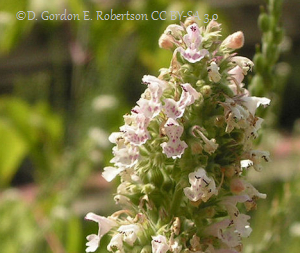Catnip Characteristics
(Nepeta cataria)

Name Origin:
The common name comes from the Etrurian city of Neptic. Often called Pussy’s Delight or catmint. Our Herb Garden has additional information on the History of Catnip.
Natural Order:
Labiatæ
Catnip Growing Cycle:
hardy perennial herb
Origins:
Catnip has become naturalized in the US and prefers dry, open places, particularly in the East.
Height:
18-36 inches tall
Appearance:
Square, branching stems with notched oval or heart-shaped leaves.
Flowers:
Clusters of pale purple, nearly white flowers in small heads.
How to Grow Catnip
(Seeds, sowing and harvesting)
Growing Catnip From Seeds

An ounce of catnip seeds contains approximately 3,400 seeds. Catnip seeds are viable for 5 years.
Catnip seeds are considered easy to germinate and easy to grow.
When growing catnip from seed, sow seeds in autumn or spring in their intended place or catnip seedlings can be started indoors or in a nursery bed. Once in place, catnip can grow for several years with only minimal weeding required. However, like most herbs in the mint family, catnip can spread and take over a garden if permitted to do so.

When to Pick Cat Nip Leaves
Cat nip leaves can be picked any time during the season after the plants have reached eight inches tall. Pick dry leaves after morning dew has evaporated and never cut more than half of the plant during growing season. In the fall, cut entire stems to encourage growth – bundle the cuttings and hang them to dry.
Pinch back flowers to encourage leaf growth.
Catnip Uses
(leaves and oil)
Catnip is often used as a bee forage and is why open areas are often planted with catnip.
At one time catnip leaves were used in sauces, but milder flavors have supplanted it’s place in the culinary kitchen. In their folk medicine lore, the French often used catnip for infant flatulence.
Catnip oil is a natural insect repellant and can be quite effective against termites and fleas.
Catnip is now primarily grown as a treat for cats and their owners.